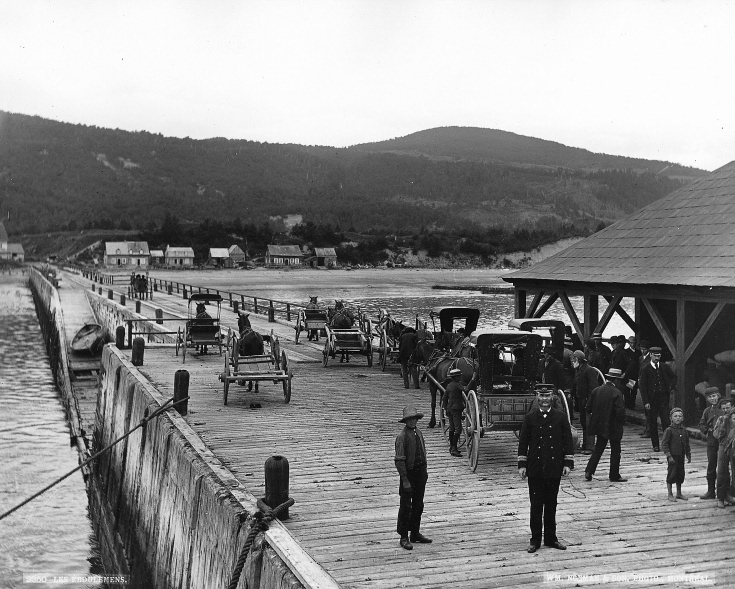The dock at Les Éboulements

Wm. Notman & Son, Les Éboulements, Quebec, circa 1890
Source: collection of the McCord Museum, VIEW-2350
Charlevoix is a very rugged area in which land transportation is difficult. The construction of roads is more hazardous than in less hilly regions. No wonder the St. Lawrence River became its main transportation route, as it allowed communication and commercial exchanges with other regions. In 1854, a deep-water dock was built in the part of Les Éboulements located on the river (“Les Éboulements-en-bas”, later renamed Saint-Joseph-de-la-Rive, in 1931). This dock saw the arrival and departure of schooners, as well as river cruise ships. The dock was built out of wooden crates filled with stones, a structure typical of the ones built by the federal government at the time. Thanks to it, the village was able to accommodate larger ships, and thus multiply exchanges with other regions in order to break down the isolation. This is the dock from which Zéphirin started his business.

